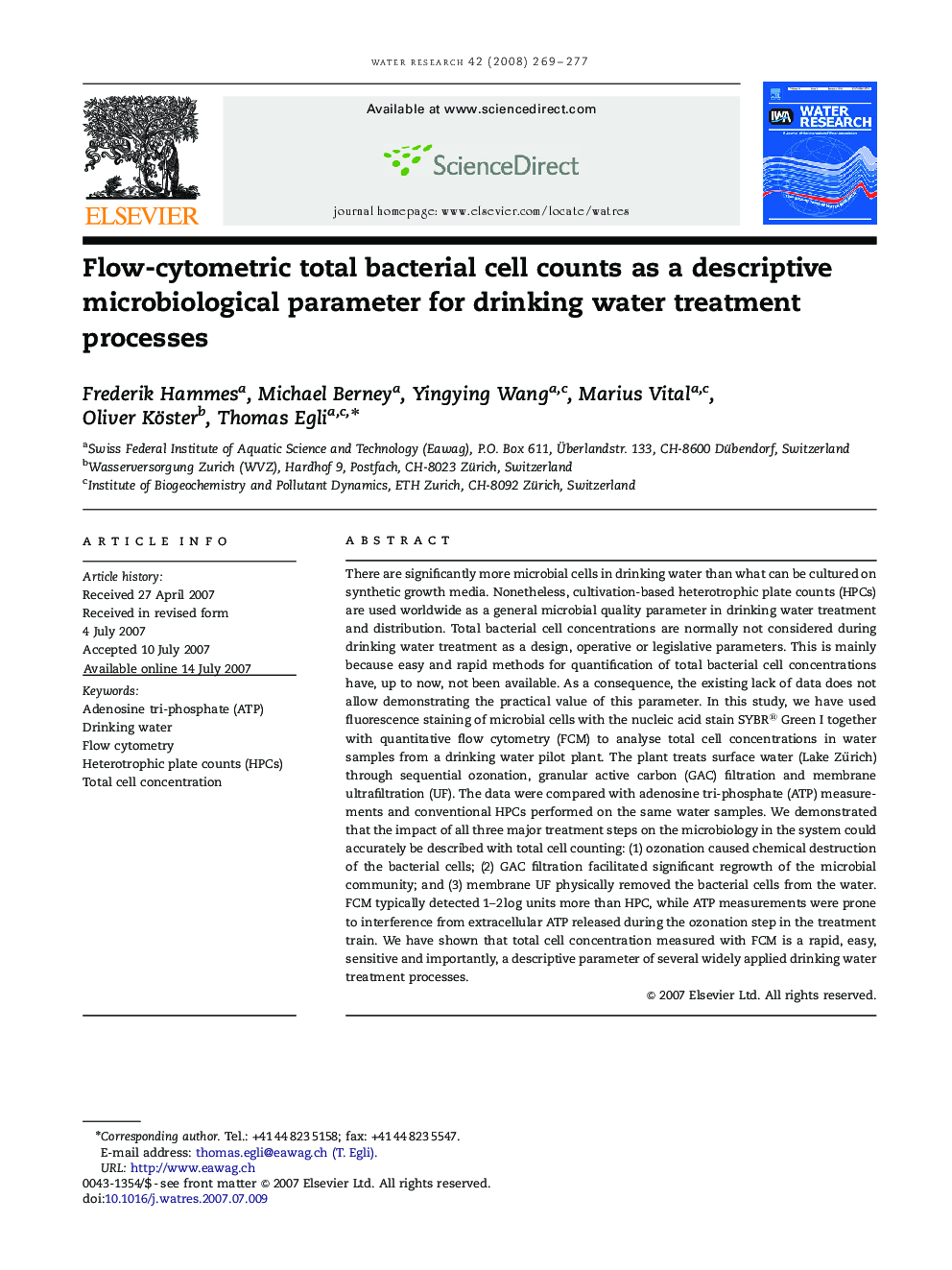| کد مقاله | کد نشریه | سال انتشار | مقاله انگلیسی | نسخه تمام متن |
|---|---|---|---|---|
| 4485760 | 1623125 | 2008 | 9 صفحه PDF | دانلود رایگان |

There are significantly more microbial cells in drinking water than what can be cultured on synthetic growth media. Nonetheless, cultivation-based heterotrophic plate counts (HPCs) are used worldwide as a general microbial quality parameter in drinking water treatment and distribution. Total bacterial cell concentrations are normally not considered during drinking water treatment as a design, operative or legislative parameters. This is mainly because easy and rapid methods for quantification of total bacterial cell concentrations have, up to now, not been available. As a consequence, the existing lack of data does not allow demonstrating the practical value of this parameter. In this study, we have used fluorescence staining of microbial cells with the nucleic acid stain SYBR® Green I together with quantitative flow cytometry (FCM) to analyse total cell concentrations in water samples from a drinking water pilot plant. The plant treats surface water (Lake Zürich) through sequential ozonation, granular active carbon (GAC) filtration and membrane ultrafiltration (UF). The data were compared with adenosine tri-phosphate (ATP) measurements and conventional HPCs performed on the same water samples. We demonstrated that the impact of all three major treatment steps on the microbiology in the system could accurately be described with total cell counting: (1) ozonation caused chemical destruction of the bacterial cells; (2) GAC filtration facilitated significant regrowth of the microbial community; and (3) membrane UF physically removed the bacterial cells from the water. FCM typically detected 1–2 log units more than HPC, while ATP measurements were prone to interference from extracellular ATP released during the ozonation step in the treatment train. We have shown that total cell concentration measured with FCM is a rapid, easy, sensitive and importantly, a descriptive parameter of several widely applied drinking water treatment processes.
Journal: Water Research - Volume 42, Issues 1–2, January 2008, Pages 269–277